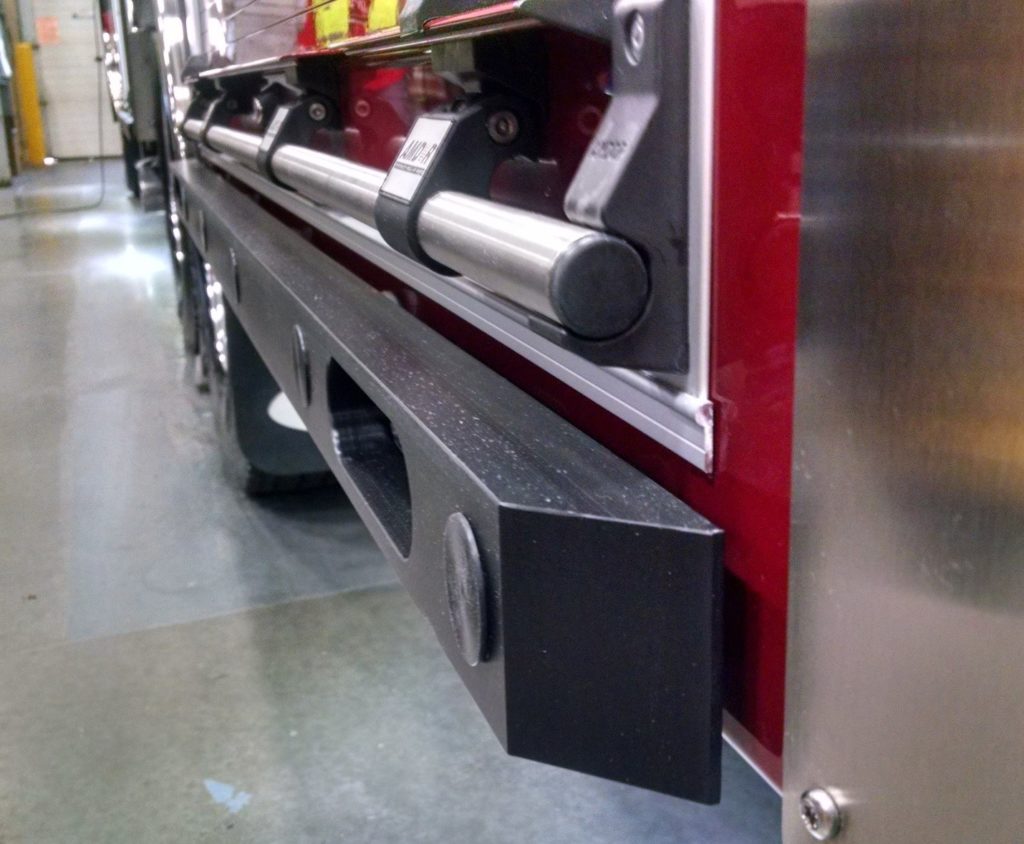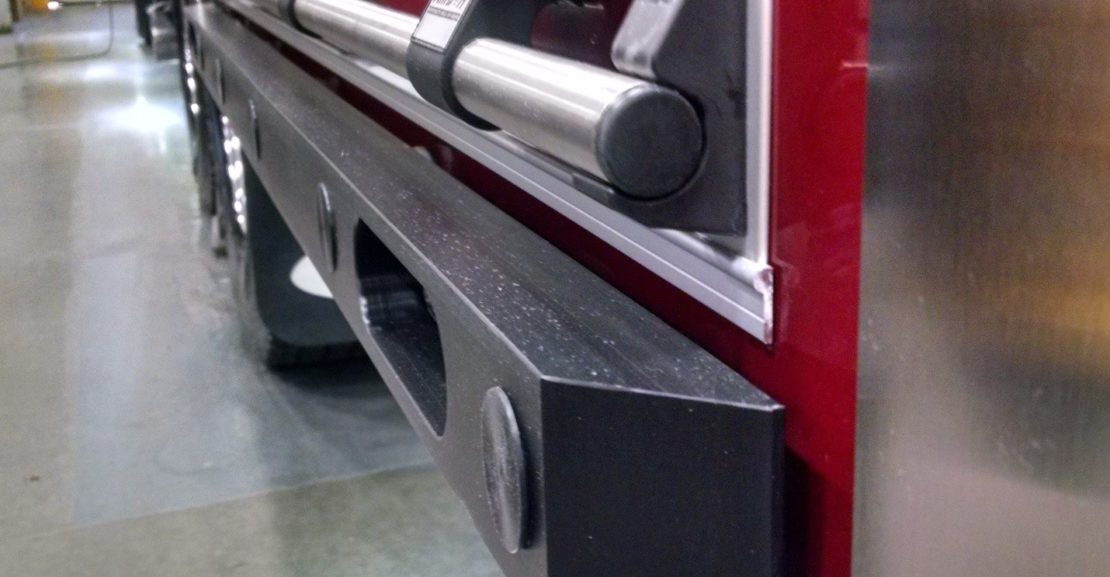When developing specifications for new apparatus or performing a major rebuild project on an existing unit consider what is protecting the lower portion of the body and door components. Whether your apparatus body is fabricated of galvanneal steel, aluminum or stainless steel when the apparatus is involved in a fender-bender or maneuvering around in tight quarters a little thought of piece of material can often make the difference between a minor scrape and severe damage, requiring expensive repairs.
The term rub rails is associated with the short pieces of material that are typically bolted to the lower portion of the body, just below each compartment. Early body designs incorporated a heavy steel rub rail that was continuously welded and spaced away approximately 1.50 inches from the body side panels as shown in the photo below. The 12 gauge steel rail was designed to deflect small objects while protecting the body and compartment doors.

This heavy duty rub rail design worked well, however the mild steel was susceptible to rust and corrosion and gave way to bolt on style rails which could be easily replaced in the station. When reading through detailed apparatus specifications the description of the rub rail is generally given little attention and appears some sixty pages back into the document.
Some apparatus manufacturers consider the rub rail to be a decorative component and fabricate the rub rail from light weight material such as .125 inch aluminum tread plate or 16 gauge stainless steel. While the highly polished material looks pretty, it does little to protect the body in the event of an accident or the typical body scrapes encountered in restricted spaces.
In the photo below, a heavier gauge stainless steel material was specified and permitted lower zone LED warning lights to be recessed into the rail. When you look at the rub rail and body from either rear corner of the body the rub rail would be the widest part of the body in order to protect the door and other body bolt on components.

Hinged door bodies can be protected with a rub rail that runs the full length of the body. Due to the rear axle and tire spacing required expect that the body fenderettes will extend past the rub rail. If your response district has numerous tight spaces including alleys, one way streets and steel balusters a rubber fenderette may be a better choice.
• Browse Our Inventory of Quality Used Pumpers, Aerials & Rescues Now
Roll up doors typically extend past the body sides due to the lift bar latch and door closures. Different brands of shutter style doors extend away from the body panels with a variety of dimensions. The photo below depicts an extruded aluminum rub rail that does little to protect the door hardware or body. In the event of a minor accident moderate to severe body damage will result.

On this apparatus note that the door lift bar latch extends past the rub rail. The aluminum rub rail does nothing more than fill in the gap below the floor of the body compartments. The solution here is to specify that all portions of the rub rail should be spaced away from the body, in addition to providing a space for road debris and water to drain from the rub rail will now actually protect the side of the apparatus body, as originally intended.
• Selling a Fire Truck? We May Be Interested in Buying … Click Here to Get Started
Alternative rub rail designs are available, including the use of heavy poly material where the rail is attached to the lower body flange with recessed hardware and can be incrementally spaced away from the body depending upon the use of hinged or roll up shutter doors.

Note how the poly rub rail protects the door hardware and has angled front and ends, which can deflect a small object and provide areas to recess running and warning lights into the rail. The height of the rub rail provides much better protection than decorative rails which often compress, causing damage to the body structure and doors.

Also consider protecting the pump panel area with rub rail material. Apparatus manufacturers offer various standard designs for pump panel running boards and step surfaces. While none of us plan to be involved with an apparatus accident, the importance of protecting all four sides of the vehicle is important. Sometimes it’s the small details that really matter.

